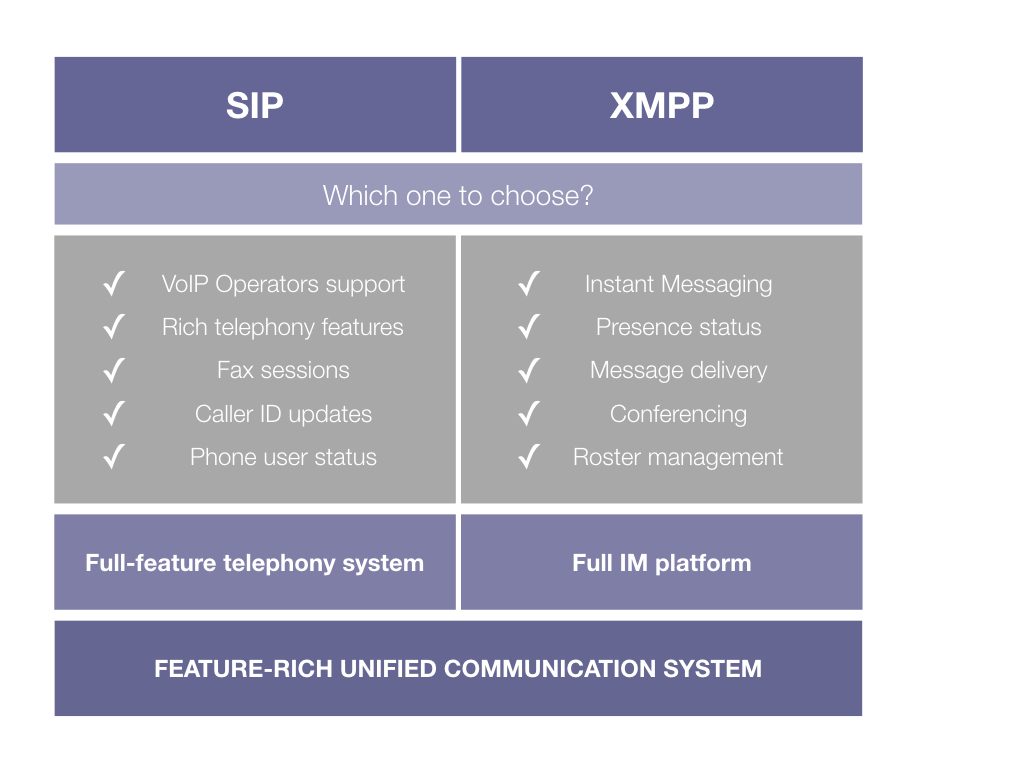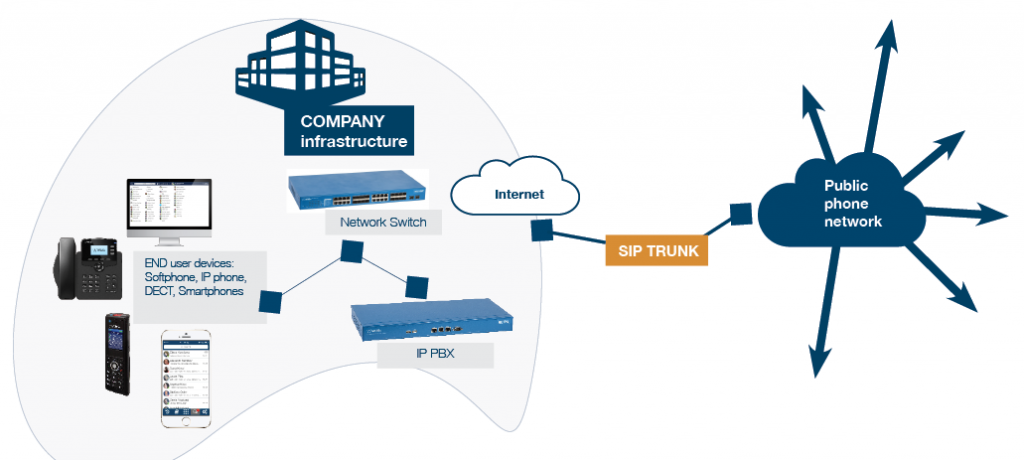
Better understand modern approaches to voice communications
At its simplest, telephony just means the technology we use to talk to one another at a distance.
In reality, of course, we all know the definition is much murkier.
These days, examining phone systems means putting multiple versions of technology up against each other. It may make some people think of rotary or touch-tone phones, and make others think of only touchscreen-driven devices. That’s to say nothing of the networks powering this hardware, the deep, dark ocean of technical details and acronyms lurking below the tip of the proverbial iceberg.
Continue reading “What is Telephony, and Which Type Is Most Effective?”

 In this blog article we will discuss the basic standards used for real-time communications — SIP and XMPP — what is the difference, how each of them works, and, which one to choose.
In this blog article we will discuss the basic standards used for real-time communications — SIP and XMPP — what is the difference, how each of them works, and, which one to choose.  Years ago when VoIP first appeared on the scene, in the time of dial-up Internet, it was associated with poor audio quality and dropped calls. Today it is no longer a problem, thanks to the increased availability of broadband Ethernet services. Large and small companies, public administration organizations worldwide opt for VoIP, while some other enterprises are still hesitant to make the move.
Years ago when VoIP first appeared on the scene, in the time of dial-up Internet, it was associated with poor audio quality and dropped calls. Today it is no longer a problem, thanks to the increased availability of broadband Ethernet services. Large and small companies, public administration organizations worldwide opt for VoIP, while some other enterprises are still hesitant to make the move.